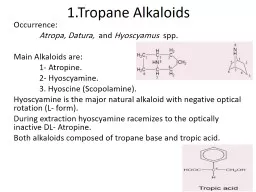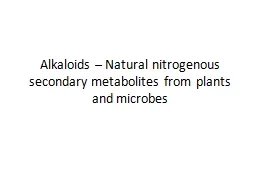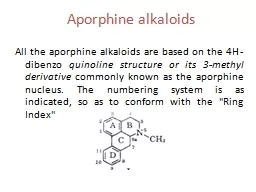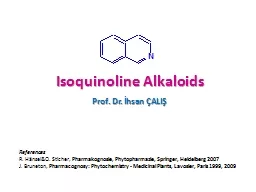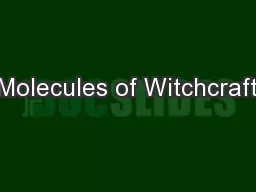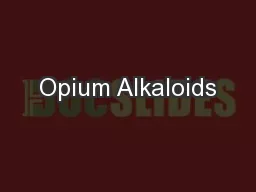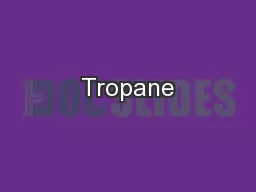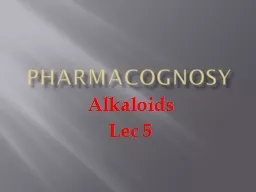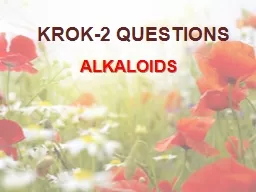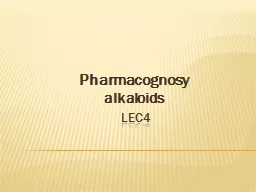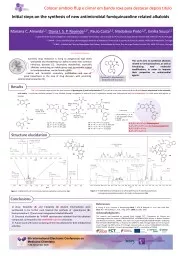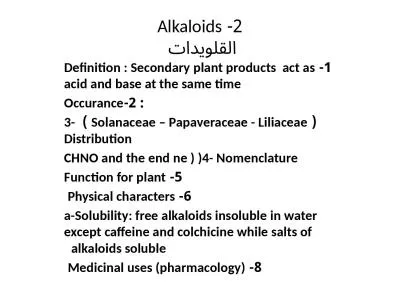PPT-1.Tropane Alkaloids Occurrence:
Author : onionchevrolet | Published Date : 2020-06-16
Atropa Datura and Hyoscyamus spp Main Alkaloids are 1 Atropine 2 Hyoscyamine 3 Hyoscine Scopolamine Hyoscyamine is the major natural alkaloid with negative
Presentation Embed Code
Download Presentation
Download Presentation The PPT/PDF document "1.Tropane Alkaloids Occurrence:" is the property of its rightful owner. Permission is granted to download and print the materials on this website for personal, non-commercial use only, and to display it on your personal computer provided you do not modify the materials and that you retain all copyright notices contained in the materials. By downloading content from our website, you accept the terms of this agreement.
1.Tropane Alkaloids Occurrence:: Transcript
Download Rules Of Document
"1.Tropane Alkaloids Occurrence:"The content belongs to its owner. You may download and print it for personal use, without modification, and keep all copyright notices. By downloading, you agree to these terms.
Related Documents

